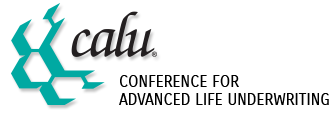
455 Avenue Road, Suite 100, Toronto, Ontario, M4V 2J2
Tel: (416) 966-9675 Fax: (416) 966-9677

In a recent publication of the Canadian Tax Foundation (CTF, Volume 52, No.3, 2004), CALU members Peter Everett and Chris Ireland contribute the article Tax Planning Regarding the Ownership of Life Insurance. The authors observe that life insurance is becoming increasing recognized and respected by consumers and professional advisors alike. By way of the following overview, we encourage calu.ca visitors to consider an examination of the original article and its potential importance to clients and associates.
Table of Contents
The authors point out that some of the most important uses of life insurance in estate and tax planning concern succession of a family business, liquidity to an estate, contributions to charity, enhanced returns on other financial products, and as a vehicle to accumulate funds. The article notes that there have been a number of changes to the taxation of life insurance over the past quarter century, singling out the federal budget of 1981 given its impact on the taxation of life insurance proceeds and income, and the capital dividend stop-loss rules introduced in 1995 .
Given the fact that, in many situations, the payment of life insurance premiums is not a deductible expense, it is important to concentrate on those specific situations where the income tax act does allow for the deductibility of at least a portion of the premiums. Everett & Ireland review considerations of personal versus corporate ownership, intended applications of the insurance, forms and formats of agreements between shareholders, creditor-proofing, capital dividend account, leveraged situations and recent commentary regarding the above by the Canada Revenue Agency (CRA) via the CALU Tax Policy Roundtable.
Changes in tax rates for the owner(s) of a life insurance policy may require consideration for a change in ownership, as can the sale of a company's shares, or the need to move the ownership of a policy from a parent to a child. Everett & Ireland review the issues surrounding the disposition of a policy and their impact on the adjusted cost basis (ACB) as well as reviewing transfers at value, exceptions and deeming rules, policy loans, benefit issues and changes to the conditions of a policy.
Acknowledging the wealth of literature on the subject, the authors focus their comments on the issues surrounding the substituted-share rule, roll and redeem strategy, 50 percent solution and use of the CDA in non-grandfathered situations. They provide detailed examples to explain various options and arrangements emphasizing the nuances and ramifications of the various situations and the ability to achieve preferred planning solutions through the adoption of specific strategies.
The complete article Tax Planning Regarding the Ownership of Life Insurance published in Volume 52, No. 3 of the Canadian Tax Journal, is available through the Canadian Tax Foundation, www.ctf.ca. Visitors to calu.ca may also wish to review other important life insurance related publications by CALU members available through the CTF including Estate Planning and Life Insurance by Joel Cuperfain (CTF, 2002) and Life Insurance: An Innovative Financial Instrument by William J. Strain (CTF, 1994). CALU members Peter Everett and Chris Ireland can be reached at peverett@ppi.ca and cireland@ppi.ca.